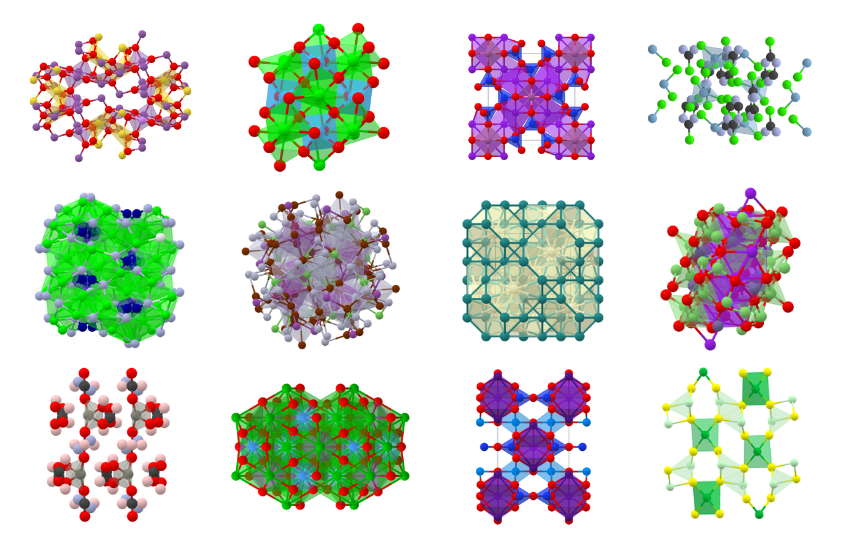
Beyond Calculation: How AI is Conquering the Mount Everest of Mathematical Reasoning
The world of artificial intelligence is witnessing a monumental shift. For years, AI has excelled at tasks rooted in pattern recognition—identifying images, translating languages, and even generating creative text. However, the domain of pure, abstract reasoning, particularly at the levels required to solve International Mathematical Olympiad (IMO) problems, remained a formidable frontier. Recent breakthroughs, particularly highlighted in the latest Google DeepMind News, are demonstrating that AI is not just a sophisticated calculator but is evolving into a genuine mathematical collaborator capable of creativity and logical deduction. This development signals a new era where AI can tackle problems that have stumped the brightest human minds for decades.
This article delves into the technical architecture behind these advanced AI systems. We will explore the hybrid approach that masterfully combines the intuitive, pattern-matching power of Large Language Models (LLMs) with the rigorous, logical precision of formal verification and symbolic math engines. We will examine the core concepts, provide practical code examples using popular libraries, discuss advanced training techniques, and outline best practices for building and deploying these next-generation reasoning systems. This journey will touch upon key updates from the worlds of OpenAI News, Meta AI News, and the broader ecosystem of tools and frameworks that make this progress possible.
Section 1: The Dual-Pillar Architecture of AI Mathematicians
Modern AI systems capable of high-level mathematical reasoning are not monolithic. They are sophisticated, hybrid systems built on two distinct but complementary pillars: Large Language Models for intuition and strategy, and Symbolic Solvers for rigor and verification. This separation of concerns is crucial to overcoming the inherent limitations of each component.
The LLM as the “Intuition Engine”
LLMs, such as those developed by OpenAI, Anthropic, and Cohere, are trained on vast corpora of text and code, including millions of mathematical papers, textbooks, and problem sets. This allows them to develop a powerful, albeit heuristic, understanding of mathematical concepts. When presented with a complex geometry or number theory problem, the LLM acts as an “intuition engine.” It doesn’t perform formal calculations; instead, it generates plausible strategies, suggests auxiliary constructions (e.g., “draw a line from point A to point C”), and proposes a high-level plan of attack. These models are typically built using frameworks highlighted in PyTorch News and TensorFlow News, and fine-tuned using specialized datasets.
The key contribution of the LLM is its ability to navigate the vast, almost infinite search space of possible solutions. It narrows down the possibilities to a manageable set of promising paths, a task that would be computationally intractable for a brute-force approach.
The Symbolic Solver as the “Rigor Engine”
While an LLM provides the creative spark, it is prone to “hallucinations” and logical fallacies. This is where symbolic mathematics and formal verification engines come in. These tools don’t guess; they operate based on strict, predefined logical rules. A symbolic engine like SymPy can manipulate algebraic expressions with perfect accuracy, while a theorem prover like Z3 can formally verify if a logical step is sound. By translating the LLM’s natural language suggestions into a formal language, the system can rigorously check each step of the proposed proof.
Let’s see a simple example of a symbolic engine in action using Python’s SymPy library. This demonstrates how the system can reason with abstract symbols, not just numerical values.

# Using SymPy for symbolic mathematics
# This demonstrates the "rigor engine" component
import sympy
# Define symbols
x, y = sympy.symbols('x y')
# Define an equation
# (x + y)^2
equation = (x + y)**2
# Use the symbolic engine to expand the equation
# The engine applies formal algebraic rules, it doesn't just compute a number.
expanded_equation = sympy.expand(equation)
print(f"Original Equation: {equation}")
print(f"Expanded Equation: {expanded_equation}")
# Let's perform another operation: factorization
# This is the reverse of expansion
factored_expression = sympy.factor(expanded_equation)
print(f"Factored back: {factored_expression}")
# Verify that x^2 + 2xy + y^2 is indeed equal to (x+y)^2
# The .equals() method performs a structural and mathematical check
are_equal = expanded_equation.equals((x+y)**2)
print(f"Is the expansion correct? {are_equal}")In this example, SymPy isn’t just crunching numbers; it’s applying the fundamental rules of algebra to manipulate expressions. This is the kind of rigorous, step-by-step verification that forms the second pillar of an AI mathematician.
Section 2: Implementing the Search and Verification Loop
The magic happens when the intuition engine and the rigor engine work in concert. This is typically implemented as a “search and verification” loop, an iterative process where the system explores potential solution paths, pruning those that are logically unsound.
The Core Loop Explained
- Problem Input: The system receives a problem stated in natural language (e.g., a geometry problem from the IMO).
- Strategy Generation (LLM): The LLM analyzes the problem and generates a set of potential next steps or strategic hints. Instead of generating a full proof at once, it might suggest a single, promising action. This process can be managed by orchestration frameworks like LangChain or LlamaIndex, which excel at managing multi-step AI workflows.
- Formalization: The natural language suggestion is translated into a formal, machine-readable format. For example, “Find the midpoint of segment AB” is converted into a precise symbolic representation.
- Verification (Solver): The formalized step is fed to the symbolic solver or theorem prover. The solver attempts to prove that this step is a valid deduction from the current state of the problem.
- State Update: If the step is verified, the new fact (e.g., “Point M is the midpoint of AB”) is added to the system’s knowledge base for this problem. If it fails verification, that path is discarded.
- Iteration: The loop repeats, with the LLM now considering the updated problem state to generate the next step. This continues until a final solution is reached and verified.
This iterative refinement is far more powerful than a single-pass attempt. It allows the AI to self-correct and explore complex proof trees, much like a human mathematician would on a whiteboard.
Formal Verification with Z3
To illustrate the verification step, let’s use the Z3 Theorem Prover from Microsoft Research. Z3 is a Satisfiability Modulo Theories (SMT) solver, which can determine the satisfiability of logical formulas. Imagine the LLM proposes a deduction that can be expressed as a logical statement. We can use Z3 to check its validity.
# Using z3-solver for formal verification
# This demonstrates how a proposed step can be rigorously checked.
from z3 import Solver, Int, And, Or, Not, sat, prove
# Imagine the LLM is working on a number theory problem and deduces
# a relationship between two integers, x and y.
# Let's say the known premises are:
# 1. x > 10
# 2. y < 5
# 3. y > 0
# The LLM proposes the conclusion: "Therefore, x must be greater than y."
# We can use Z3 to prove this.
# We want to prove: (x > 10 AND y < 5 AND y > 0) => (x > y)
# To do this with a prover, we check if the negation is unsatisfiable.
# i.e., is it impossible for the premises to be true AND the conclusion to be false?
x, y = Int('x'), Int('y')
# Create a solver instance
s = Solver()
# Add the premises (known facts)
s.add(x > 10)
s.add(y < 5)
s.add(y > 0)
# Add the NEGATION of the conclusion we want to prove
# If this is unsatisfiable, our original conclusion is a valid theorem.
s.add(Not(x > y)) # This is equivalent to s.add(x <= y)
# Check for satisfiability
result = s.check()
if result == sat:
print("The conclusion is NOT necessarily true.")
print("Counterexample (a model where premises are true but conclusion is false):")
print(s.model())
else:
# If unsat, it means no counterexample exists. The proof is sound.
print("The conclusion is formally verified. The step is sound.")
# The prove() function simplifies this process
premise = And(x > 10, y < 5, y > 0)
conclusion = x > y
print("\nUsing the prove() helper function:")
prove(premise, conclusion) # This will output 'proved' or 'counterexample'This code shows how a logical deduction can be formally and automatically checked. In a real system, this verification step is the critical gatekeeper that prevents the LLM’s creativity from leading to incorrect results, ensuring the final proof is mathematically sound.
Section 3: Advanced Techniques – Synthetic Data Generation
One of the most significant challenges in training AI for mathematics is the scarcity of high-quality, step-by-step training data. While final proofs are available, the intermediate thought processes of mathematicians are rarely documented. The latest breakthrough, as seen in the Google DeepMind News about their AlphaGeometry project, involves a novel approach: synthetic data generation. The AI becomes its own teacher.

The Self-Improving Loop
This technique involves using the AI model itself to generate a massive, new dataset of problems, theorems, and proofs. This is a powerful form of self-supervised learning.
- Seed with Knowledge: The system starts with a set of fundamental axioms and theorems (e.g., Euclidean geometry).
- Deduce and Generate: The AI uses its reasoning engine to randomly combine existing facts and deduce new, valid geometric properties and theorems. This is done at a massive scale, generating millions of new statements.
- Filter for Quality: Not all generated theorems are interesting or useful. The system filters out trivial or redundant results, keeping only the novel and potentially complex ones.
- Generate Proofs: For the interesting new theorems, the AI system then works to find a formal proof.
- Create Training Data: Each successfully proven synthetic theorem, along with its step-by-step proof, becomes a new, high-quality training example.
- Retrain the Model: The core LLM, often based on an architecture from Hugging Face Transformers News, is then retrained on this vast new dataset of its own creation.
This process creates a virtuous cycle. A better model generates more complex and interesting data, which in turn is used to train an even better model. This allows the AI to bootstrap its way from basic axioms to Olympiad-level complexity without requiring millions of human-annotated examples. Tracking such complex experiments often involves MLOps platforms like those featured in MLflow News or Weights & Biases News.
Here is a conceptual Python snippet outlining this synthetic data generation loop.
# Conceptual code for synthetic data generation loop
# This is a simplified illustration of the advanced technique
import random
# Assume we have these pre-existing components
# from my_ai_framework import LanguageModel, FormalVerifier, TheoremDatabase
# 1. Initialize with a database of seed axioms and theorems
db = TheoremDatabase(seed_file="euclidean_axioms.txt")
llm = LanguageModel("math-expert-v1")
verifier = FormalVerifier()
# --- Synthetic Data Generation Loop ---
for i in range(1_000_000): # Run for a million iterations
# 2. Deduce and Generate: Combine existing facts
# Select two random facts from our current knowledge base
fact1, fact2 = db.get_random_facts(count=2)
# Use the LLM to hypothesize a new theorem based on these facts
prompt = f"Given that '{fact1}' and '{fact2}' are true, what new theorem might follow?"
new_hypothesis = llm.generate(prompt)
# 3. Attempt to prove the new hypothesis
# The verifier would use the search-and-verify loop internally
is_provable, proof_steps = verifier.find_proof(premises=[fact1, fact2], conclusion=new_hypothesis)
# 4. If a proof is found, add it to our database as new training data
if is_provable:
# 5. Filter for quality (e.g., non-trivial, not already known)
if not db.is_trivial(new_hypothesis) and not db.contains(new_hypothesis):
print(f"New Theorem Found and Proven: {new_hypothesis}")
db.add_new_theorem(theorem=new_hypothesis, proof=proof_steps)
# This new theorem can now be used as a premise in future iterations
# 6. Retrain the Model
# After generating a large dataset, retrain the LLM
# new_training_data = db.export_as_training_set()
# llm.fine_tune(data=new_training_data)
print("Synthetic data generation cycle complete. Model is ready for retraining.")Section 4: Best Practices, Tools, and Optimization
Building a mathematical reasoning AI is a complex endeavor that requires careful consideration of tools, potential pitfalls, and optimization strategies.

Best Practices and Common Pitfalls
- Avoiding Combinatorial Explosion: The search space for proofs is immense. Use heuristics, such as those provided by the LLM, and techniques like beam search to explore the most promising paths first. Don’t let the solver wander aimlessly.
- Robust Formalization: The translation from natural language to the formal language of the solver is a critical and error-prone step. Use structured output formats from the LLM and rigorous parsing to ensure fidelity. The latest OpenAI News on function calling is highly relevant here.
- Human-in-the-Loop: For extremely difficult problems, integrating a human expert to guide the AI’s search can be invaluable. The AI can handle the tedious verification of steps, while the human provides high-level strategic insights.
- Comprehensive Evaluation: Test the system against established benchmarks like the IMO Grand Challenge or problem sets found on platforms like Kaggle. This ensures progress is measurable and robust.
The Modern Toolchain
Developing such a system relies on a rich ecosystem of tools. Training the core models often happens on cloud platforms like Google Colab, Vertex AI, or AWS SageMaker, leveraging powerful hardware discussed in NVIDIA AI News. For efficient deployment, inference must be optimized using tools like TensorRT or the Triton Inference Server. The entire workflow, from data generation to model retraining, can be automated and managed using MLOps platforms like ClearML or orchestration tools from the Azure AI News stack.
Conclusion: The Dawn of a New Scientific Paradigm
The successful application of AI to Olympiad-level mathematics is more than just an academic curiosity; it represents a paradigm shift in how we approach scientific discovery. By combining the creative, intuitive power of LLMs with the infallible logic of formal systems, we have created a tool that can not only solve problems but also assist humans in discovering new mathematical knowledge. The techniques pioneered here—the search-and-verify loop and synthetic data generation—are not limited to mathematics. They have profound implications for fields like drug discovery, material science, and software verification.
As these systems become more powerful and accessible, they will transition from being novelties to indispensable partners in research and development. The key takeaway for developers and researchers is the power of this hybrid approach. The future of AI, especially in complex, reasoning-intensive domains, lies not in a single, monolithic model, but in the intelligent orchestration of specialized components. The journey to building a true artificial mathematician has just begun, and it promises to reshape the landscape of science and technology.



